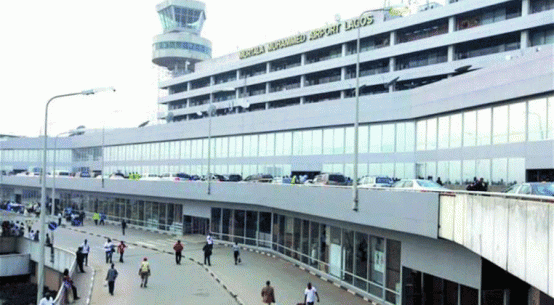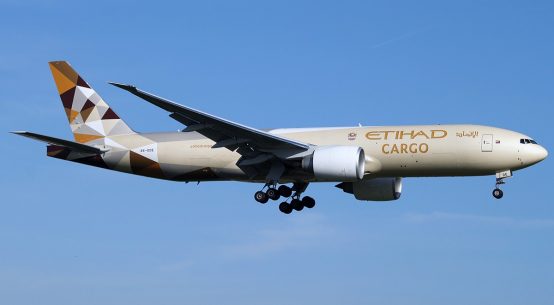This year has, arguably, been critical to the local aviation sector as it registered key developments and milestones that are expected to propel the sector and, particularly RwandAir to greater heights. The launch of works on the proposed Bugesera International Airport underlined the country’s push to improve and expand aviation infrastructure and make the sector more competitive.
The local aviation sector has come a long way. At the heart of the sector is RwandAir, which is driving its growth and connecting the country to three continents – Africa, Asia and Europe. As we move toward 2018, it’s worth noting some of the developments that lay a strong foundation for the sector and also helped position RwandAir as a key global aviation industry player.
Imagine your Ad placed here
The launch of the construction works for what will be Rwanda’s biggest international airport – Bugesera International Airport – stand out.
After years of planning and feasibility studies, works on the multimillion-dollar project finally kicked off.
The $818 million facility will be in a position to accommodate the growing air traffic as Rwanda moves toward becoming an aviation hub in the region, according to officials at the Ministry of Infrastructure.
The first phase of construction works is expected to be completed in 2018, making it one of the big projects to look out for next year, James Musoni, the Minister for Infrastructure, said then.
The facility is initially targeting to handle 1.7 million passengers every year, and will later be able to accommodate 4.5 million passengers annually on completion and after an additional $400 million investment.
RwandAir enters Europe
This year has been good for the national carrier, RwandAir as the airline made its intent to become a key global aviation player by opening two new routes into the European market. RwandAir launched its direct flights to Gatwick Airport, London on May 26 as part of its highly ambitious expansion plan that seeks to make the national carrier a big player in the sector.

So, when RwandAir’s Airbus A330-300 took off from Kigali International Airport on May 26 heading to Gatwick International Airport, London’s second-busiest airport, this goal started to have shape.
This was the first direct flight to Europe by the national carrier. Gatwick is the second-busiest airport in the United Kingdom after Heathrow.
Later, the airline launched flights to Brussels, Belgium, increasing the airline’s destinations to 23. The entry into the European market is expected to enhance trade between Rwanda and Europe.
Earlier, RwandAir had expanded its wings to Mumbai in India, a move that was seen by many as a strategy to strengthen the carrier’s competitiveness.
The opening of the East Asia route was followed by starting of flights to Harare, Zimbabwe.
As the country welcomes 2018, the world will be looking at how the airline performs in terms of expanding its footprint across the globe.
The IATA Operational Safety Audit certified airline has carried more than 650,000 passengers this year and projects to transport over three million travelers in the next five years.
Routes scheduled for opening next year
The national carrier is planning to launch flights to New York, in the US, and other Asian destinations next year, particularly in China.
It also plans new routes to Conakry in Guinea, and Bamako, Mali, as well as Dakar in Senegal.
Other planned destinations are Lilongwe in Malawi and Durban in South Africa.
RwandAir opens base in Cotonou
Rwanda and Benin inked a deal to establish a joint airline based in Cotonou in a bid to boost the presence of RwandAir in West Africa.
Under the memorandum of understanding, signed in August, RwandAir will establish a new hub in Cotonou, making it easy to operate and coordinate flights across West Africa.
The hub according to Yvonne Manzi Makolo, the RwandAir deputy CEO for corporate affairs, is expected to improve air transport on the continent especially with RwandAir being able to enter new markets in West and Central Africa with better connections and frequencies.
Early in the year, Rwanda and Mali signed an airspace agreement to boost trade. The agreement also paved way for the two countries to open their airspace, allowing their national carriers to operate without restrictions.
In addition, Nigeria granted RwandAir the fifth freedom right on the Abuja-Yaoundé route, which gives the national flag carrier a big opportunity to expand its footprint across West Africa.
New civil aviation authority law passed
On regulation side, legislators in the Lower House passed a new law governing Rwanda Civil Aviation Authority (RCAA), which restricted the agency to an oversight role – as a regulator, manager of national airports and, also provider of air navigation services.
The law promotes a sound legal framework for the aviation industry and also seeks to lay the foundation for Rwanda to be a regional hub for the industry.
RCAA, AviAssist signed deal to promote aviation safety
RCAA and the AviAssist Foundation signed a partnership deal in October to establish the AviAssist Safety Promotion Centre (ASPC) in the country.
The agreement is geared at supporting the local and regional aviation sector in building the capacity of local industry players in safety, as well as business and leadership skills, Silas Udahemuka, the Rwanda Civil Aviation Authority director general, said at the signing of the deal.
It is expected to help the region become self-sufficient in safety promotion.
“RCAA is committed to promoting aviation safety in Rwanda and across the East African region. Therefore, this partnership will help us to achieve this goal,” Udahemuka said at the time.
Kigali hosts continental aviation summit
Meanwhile, Rwanda hosted over 500 industry experts and market players in Kigali to discuss strategies geared at making the sector more profitable. During the meeting, the experts focused on different aspects of the aviation industry and the region’s potential to serve the growing aviation market on the continent.
PERFORMANCE OF AFRICA AVIATION INDUSTRY
Aviation supported more than 6.8 million jobs contributing $72.5 billion in GDP to Africa. Passenger demand is expected to grow by an average of 5.7 percent annually for most airlines including RwandAir. However, sector experts are calling for more investment by African governments to help reduce the cost of airline business on the continent.
Also, the lack of an open airspace policy, high taxes and poor infrastructure continue to hurt the industry.
The African Union is expected to establish single air report transport on the continent early next year. However, only 20 African countries have so far subscribed to African single air market.
According to Abderahmane Berthe, the African Airlines Association (AFRAA) secretary general, a single air transport market is one of the goals of AU’s Agenda 2063, which seeks to connect Africa through aviation and other transport infrastructure to achieve integration and boost intra-Africa trade.
The low side
It is projected that African airlines will lose $1.50 for each passenger if the challenges are not addressed. Over the next two decades, African aviation is forecast to grow at 5.4 percent a year, nearly tripling in size.
The continent’s top 10 fastest-growing markets are growing at an even faster 8 percent annually. Even though many are rising from a small base, it points to a very bright future for aviation in Africa, according to IATA figures.












